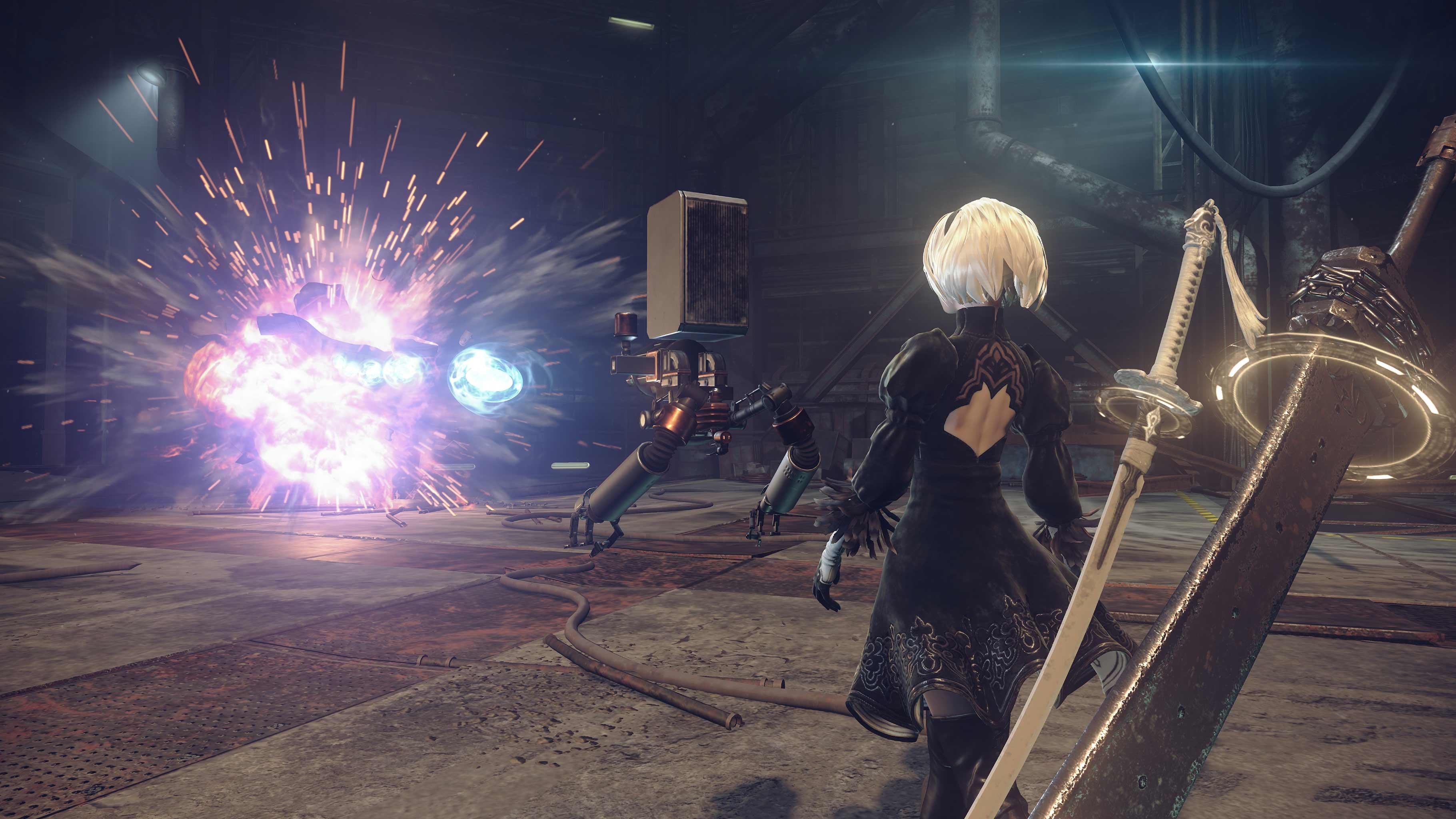This feature contains spoilers for A Way Out and NieR Automata.
Every year I wind up playing hundreds of games, from the first-person shooters that light the sales charts ablaze to indie titles that only a handful of people have spent time with. Recently, only two games have really stuck out for me: NieR Automata and A Way Out. While it may not seem like the two games have much in common with each other, they wind up being memorable for the same reasons. Both games have a cavalier spirit that revere variety, and they both have memorable endings that work because the games recognize that gaming is a shared experience.
In Automata’s case, it comes in the form of a shocking credits sequence that trades in the stylish action of the main game for a bullet hell shooter. A playable credits sequence isn’t anything revolutionary, and at first, it seems like something straight out of Super Smash Bros, but it eventually morphs into such a hellish experience that I found myself staring at a game over screen that asked if I was willing to continue. This starts a loop of failure that culminates in the player receiving help from other ships, and the difficulty level is eventually overcome by teamwork. After this, it’s revealed that the other ships all came from other players, who sacrificed their own save data in order to help another player through a rough part of the game.

It’s really a beautiful moment and one that left me feeling genuinely touched by the kindness of others. After all, players basically give up dozens of hours of their time in order to help someone they don’t even know. Automata isn’t the cheeriest of experiences, but it manages to shine a light on the good of humanity near the end in a way that’s only possible via video games. This isn’t a coincidence, but rather by design. “I really believe there are certain things that can only be done in the video game medium,” explained Taro. “I thought, ‘What if there were a way for players to support one another?’ Rather than have the story conclude within the game itself, I wanted to see if there were other ways we could impact people in their real lives. In searching for that, we came upon the idea for that particular ending sequence. There are people who will probably dislike it, but I thought that rather than have us provide the answers to the player, it would be best if each and every player could kind of discover their own answers for themselves.”
The final moments of Hazelight’s A Way Out are equally as memorable, and for similar reasons. The co-op only title forces players to spend upwards of eight hours together as they solve puzzles, survive firefights, and find reason to laugh. It’s in large a wonderful exercise in cooperation, and I was having a fantastic time spending time with one of my friends. So, needless to say, I was shocked when the game turns its themes on its head for the final chapter, and reveals that one of the characters had stabbed the other in the back. It then pits the two characters, who had only worked together prior, against each other in a grisly fight to the death.
“The whole idea with this [project] is to create a bond and tear it all apart,” explained A Way Out director Josef Fares. “What I love about this is that we see people, especially when you’re playing with a friend, that don’t see [the twist] coming at all and suddenly it changes. People feel different. Sometimes they feel [regret], sometimes they really like connect with their character.”

Since I played the character that did the act of betrayal, I found myself falling into the camp that felt regret for my actions. It’s a bit silly looking back upon it, as obviously I didn’t choose to betray my friend, but I was so taken aback by my character’s actions that I couldn’t bring myself to harm my previous partner during the chase scene and fight that followed. I felt that I had to atone for my sins, and I chose to let my former partner live rather than continue down a selfish path. It’s a true accomplishment that the twist works not only due to the story, but because of what happened outside of the game while playing.
A game based around cooperation ultimately ends with betrayal and death. It’s a dark turn, but it’s one that Fares likes since it upends the entire experience. “What I love is that you’re forced to kill your friend. You know what I mean? That’s the whole idea of it. Like I have to push this [button] now even if I don’t like it.” Fares told me that he can “even accept that [some] people don’t feel good about the ending” because it’s still registering an emotional response. After all, apathy is just about the worst thing a creative can receive.
Both NieR Automata and A Way Out take risks that ultimately move the medium of gaming forward. They show that gaming is a more versatile field due to the interactivity and the unique connection that games have with the people that play them. It’s a meta aspect of gaming that is just starting to be explored creatively, and I can’t wait to see how developers continue to use it in the future.
“I’m all about risk,” said Fares of his design philosophy. “That’s the only way we can push the creativity forward and even if there are some things that not really working 100%, [we need to] keep pushing forward and keep trying because we all want better games at the end of the day.”










